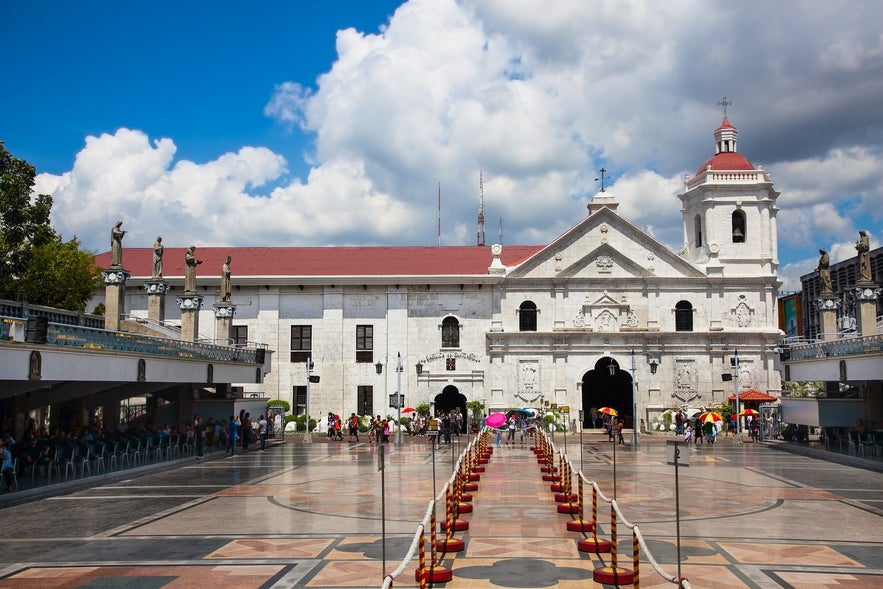Basilica Minore Del Sto. Niño

Basilica Minore Del Sto. Niño is the oldest Catholic Church in Cebu. The church houses the image of the Sto. Niño, the city’s patron, who represents Jesus as a Holy Child. It is also a place for prayer and pilgrimage to a large number of people each year, making it one of the most popular attractions in Cebu.
In 1565, Miguel Lopez de Legazpi called Basilica Minore Del Sto. Niño as San Agustin Church. The exact location of the church is the same spot where Legazpi’s Spaniard troupe discovered the image of Sto. Niño. It was thought to be the gift of Ferdinand Magellan to Queen Juana, the wife of Rajah Humabon, as a sign of their allegiance and over forty years of their baptism to Christianity.
The statue was found in a burnt wooden box left behind during the time of Magellan. Having been able to survive the fire, the Spaniards thought it to be a miracle that the image did not turn into ashes. On April 28, 1565, the same day Legazpi and his crew landed in Cebu, Augustinian priest Fr. Andres de Urdaneta founded the Sto. Niño monastery. The first church was then built in 1566 by Fr. Diego de Herrera with only wood and nipa. Unfortunately, the church was consumed by fire. That time, the image of Sto. Niño survived again.
The new wooden church was built in 1605 by Fr. Pedro Torres, but another fire destroyed the church again in 1628. The third church was built that same year by Fr. Juan Medina, this time using stones and bricks. However, the construction did not continue due to the lack of materials used.
On February 29, 1735, the new construction of the church was led by a number of people: Father Provincial Bergano, Governor-General Fernando Valdes, Bishop Manuel Antonio Decio y Ocampo of Ceby, and Juan de Albarran. Utilizing hewn stones, the present church was finished in 1739. By 1965, Pope Paul VI converted the church into Basilica Minore.
How to get there
It is located in a block beside the D. Jakosalem Street, Osmeña Boulevard, P. Burgos Street, and the Plaza Sugbo where the chapel of Magellan’s Cross is at. Take a ride on a Mybus from Mactan, Cebu to SM Cebu City. From there, ride a jeep with the route code 12I or 10M. Ask the driver to drop you off at the Basilica Minore Del Sto. Niño.
Best time to visit
This religious landmark is an all-year-round destination. It is open daily from 8:30 AM to 6 PM.









